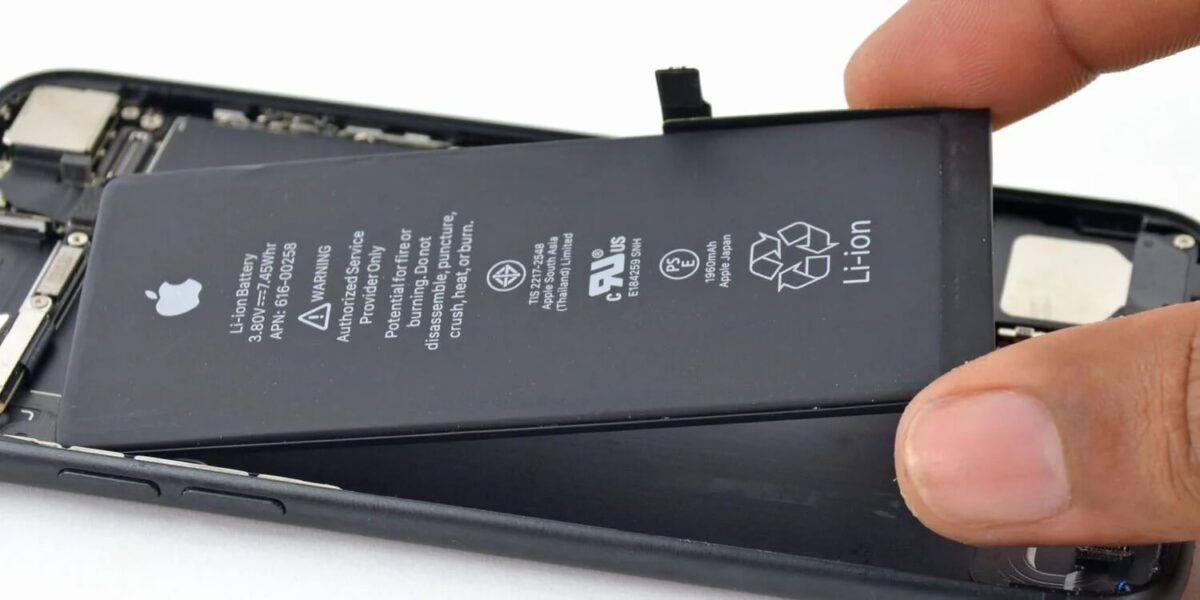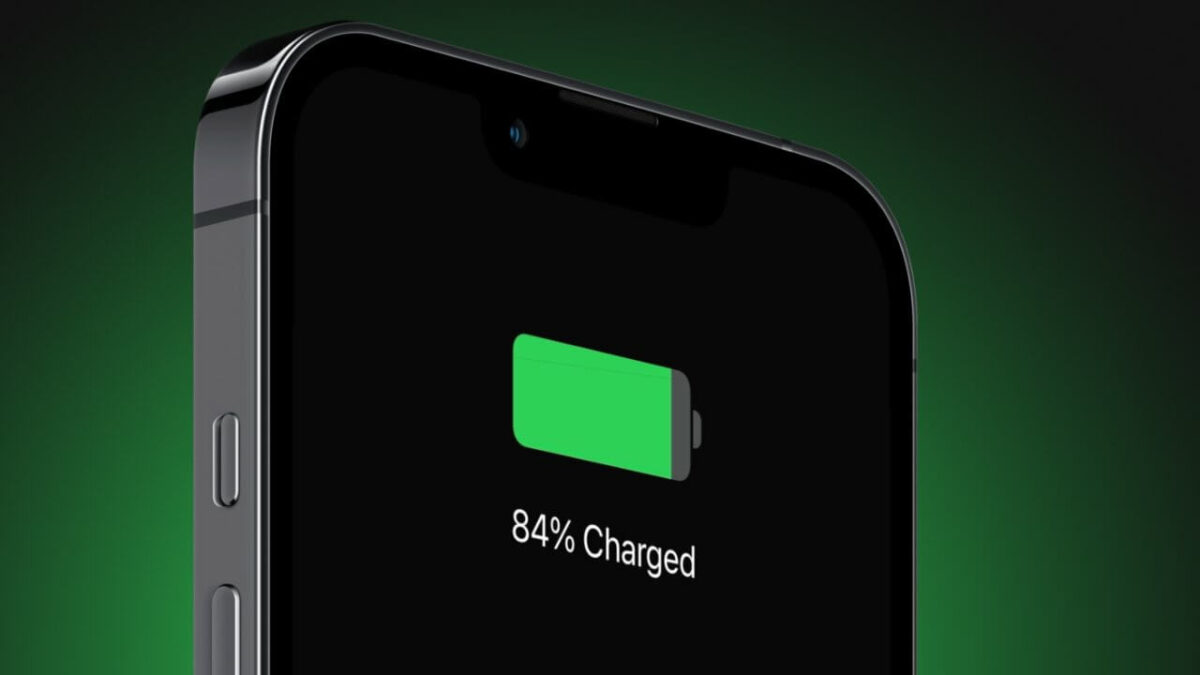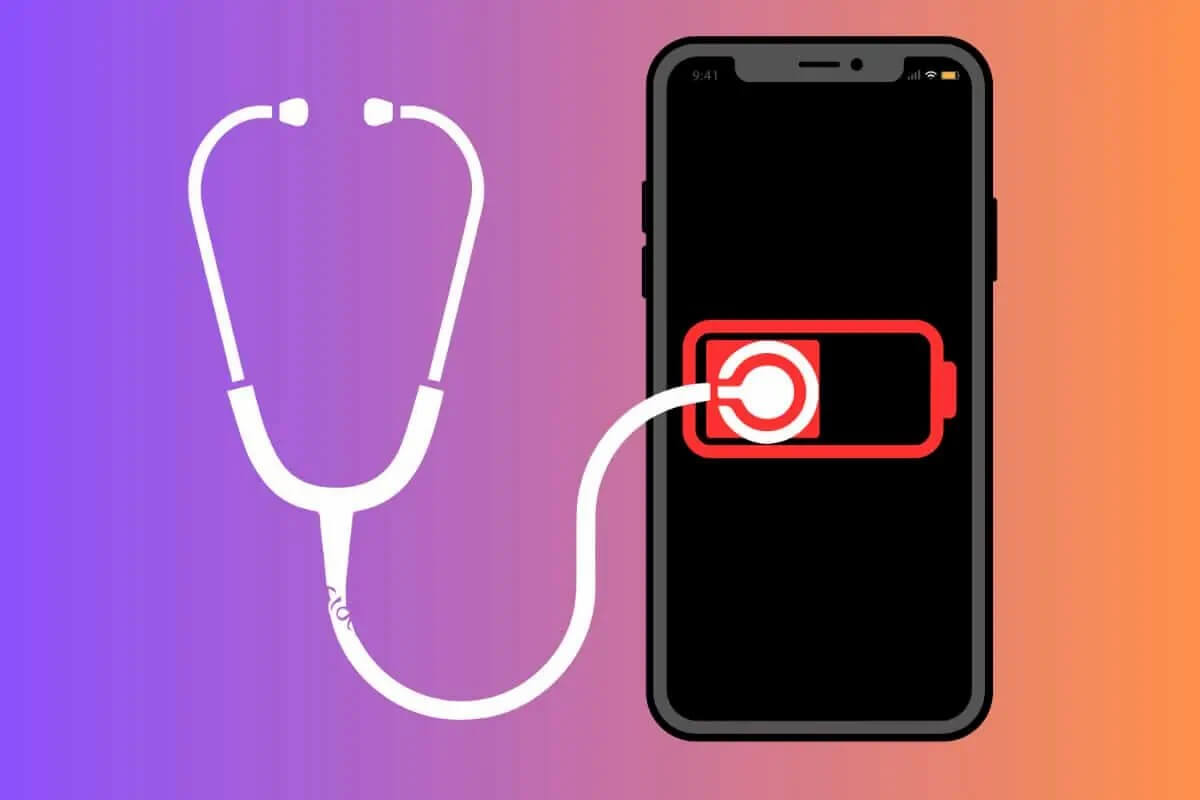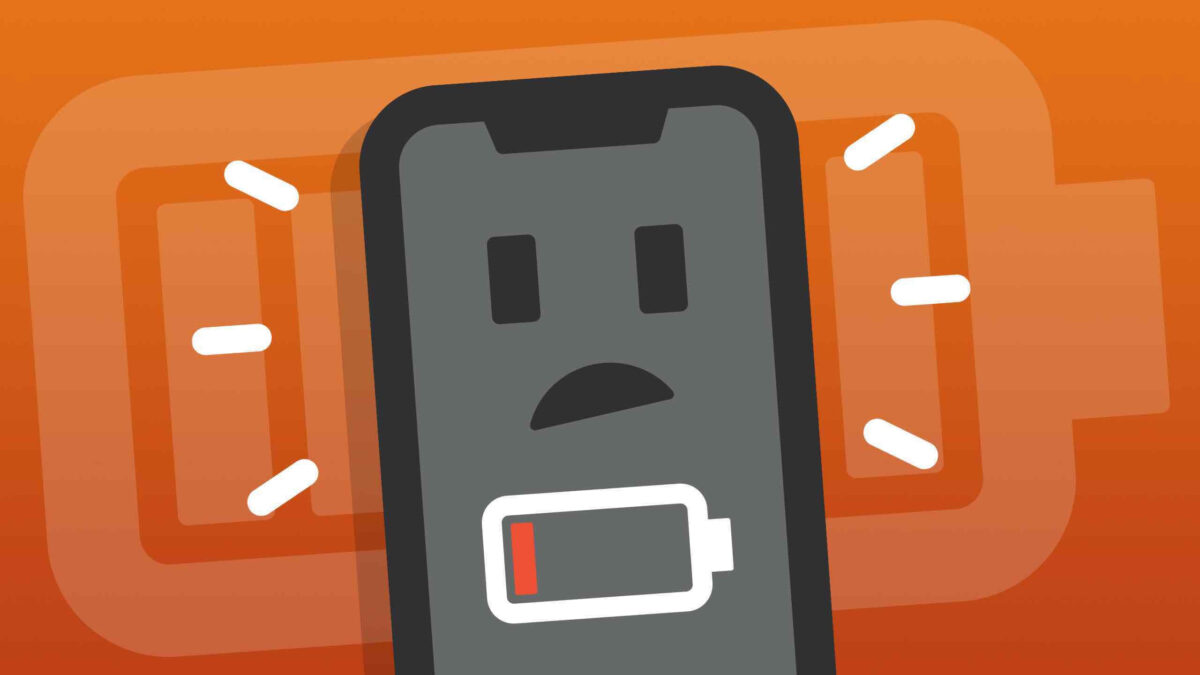All rechargeable batteries are consumables and have a finite lifespan, including iPhone batteries, eventually, their capacity and performance will decrease and they will need to be replaced. iPhone uses a built-in high-quality lithium-ion battery. They are rigorously designed, tested, and manufactured to meet Apple’s quality and performance standards. These genuine Apple batteries are also certified safe.
1. Importance of service by trained technicians using genuine Apple batteries
For most customers, going to a professional repair provider with certified technicians and using genuine Apple parts is the safest and most reliable way to repair. Apple and Apple Authorized Service Providers, as well as Independent Repair Providers, can obtain genuine Apple parts.
Lithium-ion batteries are sensitive components and should be maintained with care. A trained technician should replace the iPhone battery to prevent overheating, fire, or injury. Non-genuine parts used for repairs by untrained personnel may cause the device to malfunction or affect its safety.
Apple Retail Stores, Apple Authorized Service Providers, or Apple Repair Centers are all options to replace your iPhone battery (whether it’s under warranty or out of warranty). Independent repair providers also provide genuine parts from trained technicians for out-of-warranty battery replacements. Out-of-warranty repairs also include genuine Apple parts through an independent repair provider or do-it-yourself repair.
Also, if the service provider uses a non-genuine battery part, the replacement battery may be:
- Improperly designed or manufactured
- Previously used battery
- Damaged battery
- The battery does not fit your iPhone model
Any of the above conditions can lead to low battery capacity, improper installation, or performance issues. Using a non-genuine battery may also cause unexpected behavior after installation, device software update, or charging. Using non-genuine batteries can also cause safety concerns.
In addition to reporting charge level and battery health, genuine batteries are designed to work with iOS. Therefore, non-genuine batteries or repairers cannot obtain battery health information.

2. Parts and service history
For iOS 15.2 and later, and iPhone XR, iPhone XS models and later (including iPhone SE (2nd and 3rd generation)), you can learn about iPhone by going to Settings > General > About parts and service history. You can also check to see if the battery has been replaced. If the replacement was completed using genuine Apple parts and processes, “Genuine Apple Parts” will appear next to the battery. This section won’t appear if your iPhone hasn’t been serviced.
PLEASE NOTE: An unknown part message will appear if the battery is not fully installed or if the battery:
- Replace with a non-genuine battery
- Already used or installed on another iPhone
- not working as expected
This means that Apple has updated the device information maintained for this iPhone for service needs, security analysis, and future product improvement.
These messages will not affect your ability to use your iPhone or the battery.
3. iPhone battery and performance
iPhones are designed to be simple and easy to use. This is only possible through a combination of advanced technology and complex engineering. Batteries and performance is an important technology areas. iPhone performance is affected by many variables, including battery performance.
All rechargeable batteries are consumables and have a finite lifespan, eventually, their capacity and performance will decrease and they will need to be replaced. As the battery ages, it can cause changes in iPhone performance. We have created the information below for those who want to know more.
4. About lithium-ion batteries
iPhone batteries use lithium-ion technology. Lithium-ion batteries charge faster and last longer than older-generation battery technologies, and have higher power density for longer battery life in lighter packages. Rechargeable lithium-ion technology offers the best technology available for your device right now.
5. How to maximize battery performance
Battery life refers to how long a device runs before it needs to be recharged. “Battery life” refers to the duration of a battery before it needs to be replaced. One of the factors that affect battery life and longevity is the combination of things you do with your device. It doesn’t matter how you use your device, there are ways to help.
The life of a battery is related to its “chemical age”, and “chemical age” is not just the passage of time. It includes different factors such as the number of charging cycles and how it is maintained. Follow these tips to maximize battery performance and help extend battery life. For example, when storing your iPhone for an extended period of time, keep it half-charged. Also avoid charging or leaving iPhone in hot environments, including prolonged exposure to direct sunlight.
6. When the battery is chemically aged
All rechargeable batteries are consumable components that lose efficiency as they chemically age.
As lithium-ion batteries chemically age, they can hold less charge, which reduces the amount of time a device needs to be charged. This can be called the maximum capacity of the battery – a measure of the capacity of the battery relative to when it was new. Furthermore, the battery’s instantaneous power, or “peak power,” may be reduced.
In order for a mobile phone to function properly, the electronic device must be able to draw on the instantaneous power of the battery. One property that affects this instantaneous power transfer is the impedance of the battery. A high-impedance battery may not provide enough power for a system that requires it.
If the chemical life of the battery is longer, the impedance of the battery will increase. At a low state of charge and in a cold environment, the impedance of the battery temporarily increases. The increase in impedance is even more pronounced when a higher chemical age is added. These are battery chemistry characteristics common to all lithium-ion batteries in the industry.
The voltage of a battery with a higher impedance will drop more when power is drawn from it. To function properly, electronic components require a minimum voltage. This includes the device’s internal storage, power circuits, and the battery itself. The power management system determines the battery’s ability to provide power and manages the load to maintain operation.
When the full functionality of the power management system is no longer capable of supporting operation, the system will perform a shutdown to protect these electronic components. While this shutdown is intentional from a device perspective, it may not be expected by the user.

7. Prevent unplanned downtime
Users are more likely to experience unexpected shutdowns if the battery is low, has a high chemical life, or is cold. A device may become unreliable or unusable if shutdowns occur frequently. For iPhone 6, iPhone 6 Plus, iPhone 6s, iPhone 6s Plus, iPhone SE (1st generation), iPhone 7, and iPhone 7 Plus, iOS dynamically manages performance peaks to prevent unexpected shutdowns of the device so that the iPhone remains functional used.
The iPhone’s performance management feature is unique and does not apply to any other Apple product. iPhone 8, iPhone 8 Plus, and iPhone X include this feature starting with iOS 12.1; iPhone XS, iPhone XS Max, and iPhone XR include it starting with iOS 13.1. Due to the more advanced hardware and software design of these newer models, the impact of performance management may be less noticeable.
This performance management is done by looking at a combination of device temperature, battery state of charge, and battery impedance. iOS dynamically manages the maximum performance of certain system components (such as the CPU and GPU) only when required by these variables to prevent unexpected shutdowns. Due to this, device workloads will self-balance, allowing for a smoother distribution of system tasks instead of one-off spikes in performance.
In some cases, users may not notice any difference in day-to-day device performance. A device’s perceived change depends on how much performance management is required. In cases where more extreme forms of performance management are required, users may notice the following effects:
- Longer application startup times
- Reduce frame rate when scrolling
- Backlight dimming (can be overridden in Control Center)
- Reduce speaker volume by up to -3dB
- Frame rate drops gradually in some applications
- In the most extreme cases, the camera flash will be disabled, as shown in the camera UI
- Apps that refresh in the background may need to be reloaded on the startup
Many key areas are not affected by this performance management function. Some of these include:
- Cellular call quality and network throughput performance
- Captured photo and video quality
- GPS performance
- Positioning accuracy
- Gyroscope, accelerometer, barometer, and other sensors
- Apple pay
Changes in performance management are temporary for low battery and low-temperature conditions. If the device battery has chemically aged long enough, changes in performance management may be more permanent. Because rechargeable batteries are consumables, they eventually need to be replaced. If you’ve been affected by this and want to improve your device’s performance, replacing your device’s battery can help.
8. For iOS 11.3 and above
This performance management feature is enhanced in iOS 11.3 and later by periodically evaluating the level of performance management required to prevent unexpected shutdowns. If the battery health can support the observed peak power requirements, the amount of performance management will be reduced. If an unexpected shutdown occurs again, then performance management increases. This assessment is ongoing, enabling more adaptive performance management.
iPhone 8 and later feature more advanced hardware and software designs that more accurately estimate power needs and the battery’s ability to deliver, maximizing overall system performance. In this way, different performance management systems can better predict and avoid unexpected shutdowns on iOS. Therefore, the effects of performance management may be less noticeable on iPhone 8 and later. The rechargeable batteries in all iPhone models degrade in capacity and peak performance over time and eventually need to be replaced.
9. Battery health
For iPhone 6 and later, iOS 11.3 and later added new functionality to show battery health and advise you if the battery needs to be replaced. You can find these in Settings > Battery > Battery Health (for iOS 16.1 or later, in Settings > Battery > Battery Health & Charging ).
Additionally, you can see if the performance management feature (dynamically manages maximum performance to prevent accidental shutdown) is turned on, and can optionally be turned off. This feature will only be enabled after the first unexpected shutdown of a device whose battery capacity has diminished to provide maximum instantaneous power.
The feature is available on iPhone 6, iPhone 6 Plus, iPhone 6s, iPhone 6s Plus, iPhone SE (1st generation), iPhone 7, and iPhone 7 Plus. iPhone 8, iPhone 8 Plus, and iPhone X include this feature starting with iOS 12.1; iPhone XS, iPhone XS Max, and iPhone XR include it starting with iOS 13.1. Due to the more advanced hardware and software design of these newer models, the impact of performance management may be less noticeable.
Performance management will initially be disabled on devices updated from iOS 11.2.6 or earlier; if an unexpected shutdown occurs, it will be re-enabled. In all iPhone models, basic performance management ensures that the battery and overall system perform as designed and that internal components are protected.
Among them is behavior at high or low temperatures, as well as internal voltage management. Performance management is required for safety and intended functionality, and cannot be disabled.

1) The maximum capacity of your battery
A battery health screen displays information about the battery’s maximum capacity and peak performance.
Maximum battery capacity measures the capacity of the device’s battery relative to a new battery. As the battery chemically ages, the battery’s capacity decreases, which can result in reduced usage time between charges. Depending on the length of time between your iPhone’s manufacture and activation, your battery may show slightly below 100 percent capacity.
Typical batteries retain up to 80% of their original capacity after 500 full charge cycles when operated under normal conditions. The one-year warranty includes service coverage for defective batteries. Apple provides battery service for a fee outside of the warranty period.
As the health of the battery decreases, so does its ability to deliver peak performance. The Battery Health screen includes a Peak Performance feature section where the following messages may appear.
2) The performance is normal
You will see the following message if the battery can support normal peak performance without performance management features:
Currently, your battery is performing at its peak.
3) Applied performance management
After the performance management feature is applied, you will see the following message:
The iPhone shut down unexpectedly because the battery was unable to provide the necessary peak power. To prevent this from happening again, performance management has been implemented. disable…
Note that if performance management is disabled, it cannot be turned back on. In the event of an unexpected shutdown, it will automatically turn on again. Disable option will also be available.
4) Battery health is unknown
If iOS cannot determine the device’s battery health, you will see the following message:
This iPhone cannot determine battery health. The battery can be repaired by an Apple Authorized Service Provider. For more information on service options…
This could be caused by an incorrectly installed battery or an unknown battery part.
5) Performance management is turned off
If you disable performance management for your app, you’ll see the following message:
The iPhone shut down unexpectedly because the battery was unable to provide the necessary peak power. Performance management protection has been manually disabled.
If the device shuts down unexpectedly again, the performance management features will be reapplied. Disable option will also be available.
6) Decreased battery health
If the battery health drops significantly, the following message will also appear:
Your battery health has dropped significantly. To restore full performance and capacity, an Apple Authorized Service Provider can replace the battery. For more information on service options…
This message does not indicate a security issue. Your battery will still work. However, you may experience more noticeable battery and performance issues. Your experience will be improved with a new replacement battery.
7) Important battery information
If you see the following message, your iPhone battery could not be verified. The following message applies to iPhone XS, iPhone XS Max, iPhone XR, and later models.
Could not verify that this iPhone uses a genuine Apple battery. There is no health information for this battery. learn more…
Reported battery health information is not available. To check the battery, contact an Apple Authorized Service Provider.
10. iPhone battery problems and solutions
Is your iPhone battery acting strange? Or, have you noticed that your iPhone’s battery life isn’t as good as it was when it was new? These signs can be worrisome, but they are not uncommon.
Rapid battery drain, unexpected shutdown, and sudden drop in battery percentage are three of the most common battery issues faced by iPhone users. However, these problems don’t always indicate that you need to buy an iPhone battery. Instead, some of these issues can be fixed by tweaking settings on your iPhone or improving your battery charging habits.
Read on to learn more about what causes these iPhone battery problems and what you can do to fix them.
1) Fix the iPhone battery drain issue
If you feel like your Apple iPhone battery is draining faster than before, it may be caused by power-hungry and resource-intensive applications. To investigate this issue, you should go to Settings > Battery to get an overview of each app’s battery usage (note that the list may take some time to fully load). You can use this utility to preview the battery percentage consumed by each application in the foreground or background.
Once these apps are identified, you should disable their background activity or delete them from your iPhone. If an app has “Background Location” or “Background Activity” listed under its name in the list, it’s using more battery because it’s running in the background.
To stop battery drain, you can go to Settings > General > Background App Refresh and disable the Background App Refresh option for the apps that consume the most battery.
Alternatively, you can disable location services if those apps have location services enabled. To do this, go to Settings > Privacy > Location Services and disable the option for the apps that consume the most battery. Or, if these apps aren’t your daily driver, you can remove them entirely.
2) Fix iPhone battery shutdown unexpectedly
A frustrating issue some iPhone users face is sudden shutdowns even though their batteries still have charge. This can happen randomly and there is no defined threshold after the iPhone is powered off.
The main reason for this problem is extreme weather. Using your iPhone in extreme temperatures, whether cold or hot, can cause the battery to fail. The battery percentage displayed on iPhone may be unreliable when the temperature is below 0°C or above 35°C.
To avoid this, you should cover your iPhone (with a layer or two of clothing) in the winter. On the other hand, during summer, keep your phone out of direct sunlight to prevent it from shutting down unexpectedly.

3) The battery suddenly loses power in large chunks
A very common problem faced by iPhone users is that the battery level drops drastically even when there is little use. First, you start at 100%, when you unlock the iPhone, the battery goes to 98%, and after light use, it drops all the way down to 60%!
If you’re having this problem, don’t think that replacing your iPhone battery is the only solution. This problem can be caused by an improperly calibrated phone battery, which is actually more common than you might think. Fortunately, there is an easy workaround:
- Fully charge your iPhone.
- Use the phone until it is turned off. If you can turn your phone back on and it still shows battery remaining, keep using your phone until it turns off and won’t turn back on.
- Fully charge your phone again without interruption.
This issue may also be caused by a recent software update, and your iPhone may display an incorrect battery percentage. If you recently updated your iPhone, your best bet is to go to Settings > General > Software Update > Download and Install as soon as the next stable version is available.
You can also turn Automatic Updates “On” Software Update > Automatic Updates > Toggle to On/Off
11. Conclusion
Purchasing an iPhone replacement battery should not be the first step in solving iPhone battery problems. However, if you’ve exhausted the list of fixes we’ve provided above and the problem persists, then this would be a great time to shop for an iPhone battery.
Finally, We recommend you go through our guide and say goodbye to all your iPhone battery problems.






Leave A Comment